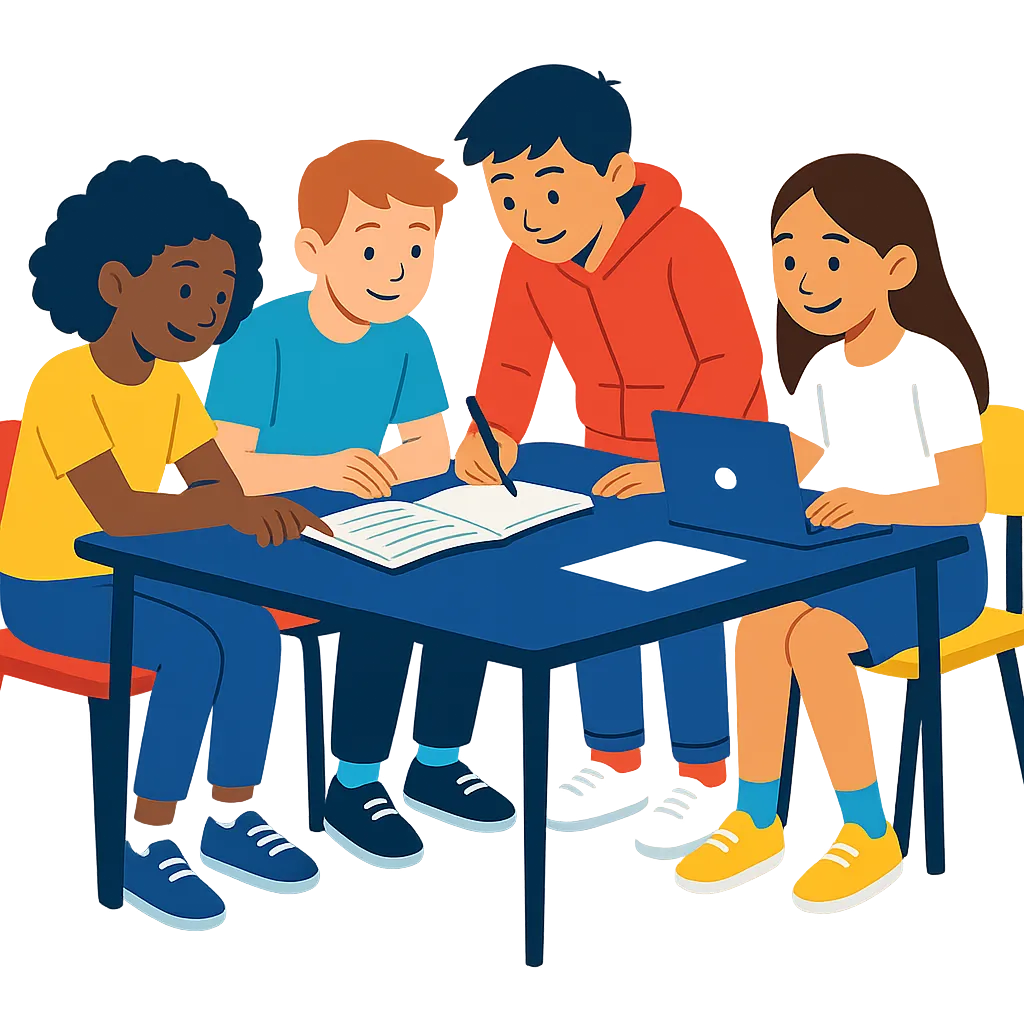Peer Mediation: One of the Best Ways to Build Student Empowered Culture

Samuel Rabkin - CEO, MediatorSPARK
8 May 2025 • 3 min read

What is Peer Mediation?
Peer mediation is a conflict resolution process in which a school trains a select group of students to help resolve conflicts among their classmates. These trained students, the mediators, guide the students involved in the conflict, the disputants, through a structured process. During this process, the disputants share their perspectives, and the mediators assist them in reaching a win-win solution.
I saw the power of this approach as a teacher at a public middle school in New York City. In a school with over 1,000 students, we had our fair share of conflicts. Fortunately, I had the opportunity to train 40 students as mediators and guided them to resolve over 100 peer conflicts with a 91% success rate. While the statistics were impressive, what stood out to me most were the tangible benefits the program brought to the school.
Benefits of Peer Mediation
School Safety
On multiple occasions, students entered peer mediations on the verge of a physical fight. Speaking with peer mediators rather than a counselor or administrator often made the disputants feel more comfortable, allowing them to speak openly about their intentions, even plans to fight. The peer mediators, trained to remain objective and neutral, would work to uncover the underlying motivations of both students and then carefully craft a win-win agreement. Time after time, once both disputants got what they needed – whether it was a promise not to be posted about on social media, an apology, or simply the chance to be understood – the urge to fight would fade and a peaceful resolution would be reached.
Reduced Discipline Issues
Not only did the peer mediators prevent violence and keep students from getting hurt, but they also helped their classmates avoid suspension. By offering a collaborative environment where disputants could feel heard, the peer mediators gave them a sense of agency that reduced the urge for retribution, keeping them out of the suspension room and in the classroom.
Student-Empowered Culture
Beyond boosting safety and reducing discipline issues, peer mediation empowered students to lead within their school community.
For disputants, it meant being heard and supported by peers. For mediators, it was a chance to become changemakers: resolving real problems, supporting classmates, and shaping the culture of their school every day. Watching middle schoolers step into these roles was powerful. But what was even more exciting was knowing that for the peer mediators, the best is yet to come. The peacemaking skills they developed prepared them as future leaders in their communities, workplaces, and families.
So given these benefits, why don’t more schools have impactful peer mediation programs?
There are specific reasons peer mediation programs often fail to transform schools. While these challenges can be overcome with the right approach, many schools unfortunately lack the support they need. The most significant reason is that schools are not receiving sufficient, comprehensive guidance for implementing peer mediation effectively.
Many organizations that provide peer mediation training focus only on teaching students how to resolve conflicts, usually through a one- or two-day workshop. While training students is important, this approach alone is not enough. It often leaves schools with more questions than answers about how to build and sustain a successful program. Schools need much more:
They need ongoing coaching for the staff responsible for the program, so they can get real-time support when questions or challenges arise.
They need custom tools for requesting, scheduling, processing, and documenting mediations, so staff can focus on training students rather than creating systems from scratch.
They need to be connected to other schools implementing peer mediation, so they can draw encouragement and insight from fellow educators.
Most importantly, they need a proven blueprint to follow step by step, with support along the way, so they can establish a program that consistently delivers results year after year.
Peer mediation is an incredibly powerful tool because it leverages a school’s most underused resource: its students. With the right support, schools can equip key students to become leaders in implementing a Tier 2 behavioral support that enhances safety and improves school culture.
The Peacemaker Pathway
Inspired both by my experience as a successful peer mediation coordinator and the gaps I saw in the support being provided to schools in this area, I left the classroom to start something new.
I created the Peacemaker Pathway, a comprehensive, one-of-a-kind approach that combines coaching, community, courses, and custom tools to help schools develop and sustain high-impact peer mediation programs.
We are currently in the process of launching our pilot program, and have space for only 10 select middle schools. If you are a grade 6-8 administrator or counselor, and want to know if your school is eligible to qualify, you can take this quick assessment below and find out in just two minutes.
